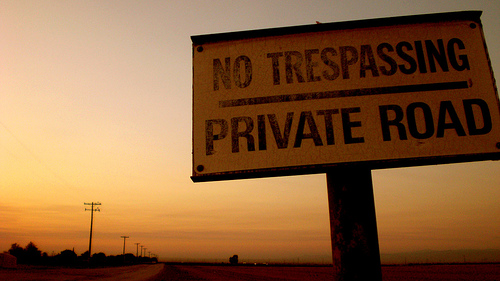I have written in the past about Sham Guaranties – this is a guaranty of a loan where the guarantor has such a close identity with the borrower that they are in effect providing a guaranty of their own loan. Such a sham guaranty is not enforceable. A typical scenario would be with a limited partnership. The general partner is fully liable for the debts of the limited partnership. If all the principals of the general partner sign the guaranty, the question arises of whether anything has been added by the guaranty. This is a sham especially when the lender takes a role in encouraging the formation of the entity, and only investigates the financial wherewithal of the individual guarantors. Business and real estate attorneys for lenders usually pay special attention to make sure they really will have an effective guaranty. In a recent decision. the guarantors were unhappy to learn that they were liable on the guaranty – there was too much separation between themselves and the borrowers, which they did on purpose so that they would not occur direct liability on the loan.
 In California Bank & Trust v. Lawlor, the bank loaned millions to Heritage Partners, secured by numerous real estate projects. Smith and Lawlor owned and controlled Covenant Management, which owned and controlled Heritage Capital, which was the general partner of the Heritage partnerships. They really tried to isolate themselves from the borrower to avoid personal liability. The lender required Smith and Lawlor to sign continuing guaranties. The borrower went into default, the lender foreclosed, and had a deficiency of $15 million dollars. California Bank and Trust brought this action to collect on the loan guaranties. Smith and Lawlor argued that the guaranties were sham guaranties and therefore they were actually the primary obligors on the loans, not true guarantors. As primary obligors, Smith and Lawlor claimed that they were entitled to the protection of California’s antideficiency statutes. This should prohibit the lender from obtaining a judgment against them for the difference between the value of the security and the outstanding loan balances.
In California Bank & Trust v. Lawlor, the bank loaned millions to Heritage Partners, secured by numerous real estate projects. Smith and Lawlor owned and controlled Covenant Management, which owned and controlled Heritage Capital, which was the general partner of the Heritage partnerships. They really tried to isolate themselves from the borrower to avoid personal liability. The lender required Smith and Lawlor to sign continuing guaranties. The borrower went into default, the lender foreclosed, and had a deficiency of $15 million dollars. California Bank and Trust brought this action to collect on the loan guaranties. Smith and Lawlor argued that the guaranties were sham guaranties and therefore they were actually the primary obligors on the loans, not true guarantors. As primary obligors, Smith and Lawlor claimed that they were entitled to the protection of California’s antideficiency statutes. This should prohibit the lender from obtaining a judgment against them for the difference between the value of the security and the outstanding loan balances.
The antideficiency statutes strictly limit the right to recover deficiency judgments for the amount the debt exceeds the value of the security. The antideficiency laws promote several public policy objectives:
 California Real Estate Lawyers Blog
California Real Estate Lawyers Blog


 In
In  In
In In
In  In
In  In a recent decision the court enforced a general reference provision that did not include an explicit waiver of a jury trial. In
In a recent decision the court enforced a general reference provision that did not include an explicit waiver of a jury trial. In In
In  A dilemma arises when the property owner pays off the loan, but has not yet completed full performance of other obligations secured by the deed of trust. Usually, on paying off the loan, the borrower wants the lender to record a reconveyance of the deed of trust, effectively removing the ‘lien’ from the record. However, courts have found that reconveyance was not required. Such was the case in
A dilemma arises when the property owner pays off the loan, but has not yet completed full performance of other obligations secured by the deed of trust. Usually, on paying off the loan, the borrower wants the lender to record a reconveyance of the deed of trust, effectively removing the ‘lien’ from the record. However, courts have found that reconveyance was not required. Such was the case in 
 Under Proposition 13 real property tax is based on “full cash value,” meaning “the appraised value of real property when purchased, newly constructed, or
Under Proposition 13 real property tax is based on “full cash value,” meaning “the appraised value of real property when purchased, newly constructed, or  This was the problem presented in a recent decision, where the court found that numerous lease terms ended of the course of the prescriptive period; in one instance the property did not have a tenant for over a year. If the owner never had a possessory right during the prescription period, he had a defense to the prescriptive easement claim. However, in this case, the lessor / owner did not have a tenant the entire period, so the court concluded it should have taken action to prevent the trespassing use. Parties in such situtations may want to consult an experienced
This was the problem presented in a recent decision, where the court found that numerous lease terms ended of the course of the prescriptive period; in one instance the property did not have a tenant for over a year. If the owner never had a possessory right during the prescription period, he had a defense to the prescriptive easement claim. However, in this case, the lessor / owner did not have a tenant the entire period, so the court concluded it should have taken action to prevent the trespassing use. Parties in such situtations may want to consult an experienced